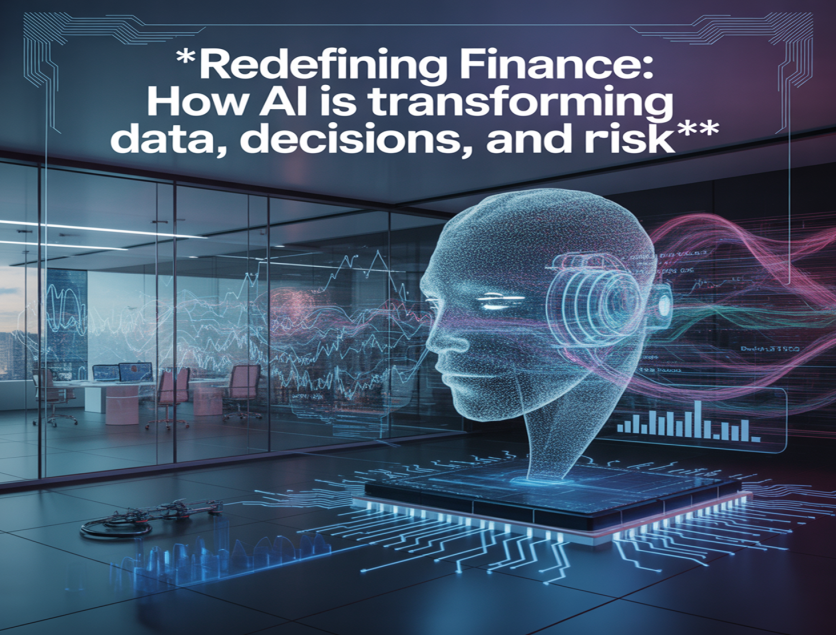
As Purushotham Jinka observes, artificial intelligence (AI) and machine learning (ML) have transitioned from being visionary technologies to becoming foundational components of contemporary financial systems. Their integration has fundamentally transformed data processing, enabling institutions to transcend traditional automation and advance toward intelligent prediction and precision-oriented decision-making. This paradigm shift signifies a profound redefinition of how the financial sector interprets, analyzes, and utilizes data, resulting in operations that are markedly faster, more accurate, and increasingly adaptive to dynamic market conditions.
Smart Market Analytics and Trading Evolution
One of the most striking innovations lies in market analytics and trading. Modern financial platforms now deploy AI algorithms that can scan global exchanges within milliseconds. These systems track intricate variables from order flows and asset correlations to social sentiment, identifying patterns that human analysts could never discern.
Deep learning and reinforcement learning models have revolutionized trading behavior. They adapt continuously, refining their strategies based on past performance and shifting market conditions. This self-learning capacity ensures stability and precision even during volatility, giving traders an analytical edge that conventional models cannot match. The result is a new era of market intelligence, one where insight is not reactive but anticipatory.
Reinventing Credit Scoring and Lending
Machine learning has dramatically reshaped the landscape of credit assessment. Unlike traditional models that rely on static, limited data, today's systems integrate vast datasets that include payment histories, digital behavior, and even text-based application data.
These models use advanced algorithms such as neural networks and gradient boosting to assess creditworthiness in multidimensional ways. They detect early warning signs of financial stress, enabling lenders to intervene before delinquencies occur. By continuously learning from new data, these systems evolve to reflect real-time borrower behavior. This not only reduces risk but also extends financial access to individuals with limited credit histories — a crucial step toward financial inclusivity.
Understanding Markets Through Language
Another innovation revolutionizing financial decision-making is natural language processing (NLP). Modern NLP tools analyze enormous volumes of unstructured data, including news articles, social media posts, and financial reports, to gauge market sentiment and forecast potential disruptions.
These systems don't just count positive or negative words. They interpret the context and tone specific to financial communication, transforming linguistic nuance into measurable market indicators. On trading floors, this technology empowers analysts to anticipate events before they fully impact prices, creating a new dimension of real-time financial awareness.
The Intelligent Portfolio: Personalized and Predictive
AI-powered portfolio management has fundamentally altered investment strategy. Intelligent systems now analyze investor behavior, risk tolerance, and market conditions simultaneously to craft personalized recommendations.
By combining optimization algorithms with behavioral analytics, these platforms adjust portfolios dynamically, considering not only statistical risk but also investor psychology. Natural language generation tools further enhance accessibility, translating complex performance data into clear, conversational summaries. The result is an investment experience that's not just data-driven but deeply human-centered, democratizing sophisticated financial advice once reserved for elite investors.
Revolutionizing Risk Management
AI has brought a new precision to risk management. In fraud prevention, machine learning models identify anomalies invisible to static rule-based systems. They analyze millions of transactions, learning to recognize subtle deviations that indicate suspicious behavior, all in real time.
In regulatory compliance, natural language processing helps institutions interpret complex legal documents, automatically mapping obligations to internal controls. Similarly, graph analytics trace hidden money-laundering networks by connecting seemingly unrelated entities. These innovations ensure both security and efficiency, reducing compliance costs while strengthening institutional integrity.
Challenges on the Path to Innovation
Despite these advancements, financial organizations face formidable challenges. Legacy systems, often decades old, lack the flexibility required for real-time data processing. Integrating AI into such environments demands intricate modernization strategies and robust governance frameworks.
Data quality also remains a critical concern. Fragmented, inconsistent records limit the accuracy of AI models, making enterprise-wide standardization essential. Ethical issues further complicate adoption. Algorithms can inadvertently reinforce historical biases, making fairness and transparency vital elements of responsible AI governance.
In addition, regulatory uncertainty continues to evolve as governments redefine the rules surrounding data privacy, explainability, and algorithmic accountability. Coupled with a global shortage of specialized talent, these factors form the primary barriers to the seamless implementation of AI.
The Road Ahead
The integration of AI and machine learning is not merely a technological upgrade; it is the foundation of a new financial paradigm. Institutions that successfully navigate technical, ethical, and regulatory complexities will shape the future of finance, where decisions are informed by data but guided by responsibility.
Emerging innovations such as explainable AI, federated learning, and quantum computing promise to elevate this transformation even further, making financial operations smarter, safer, and more inclusive. As Purushotham Jinka notes, the key lies in merging human insight with intelligent automation, creating systems that not only compute but also comprehend.
In conclusion, the financial industry stands at the crossroads of innovation and responsibility. By embracing AI with integrity and foresight, organizations can unlock unprecedented opportunities for efficiency, transparency, and trust. In the vision outlined by Purushotham Jinka, the institutions that thrive will be those that see AI not as a tool but as a trusted partner in shaping the intelligent financial systems of tomorrow.
ⓒ 2025 TECHTIMES.com All rights reserved. Do not reproduce without permission.





